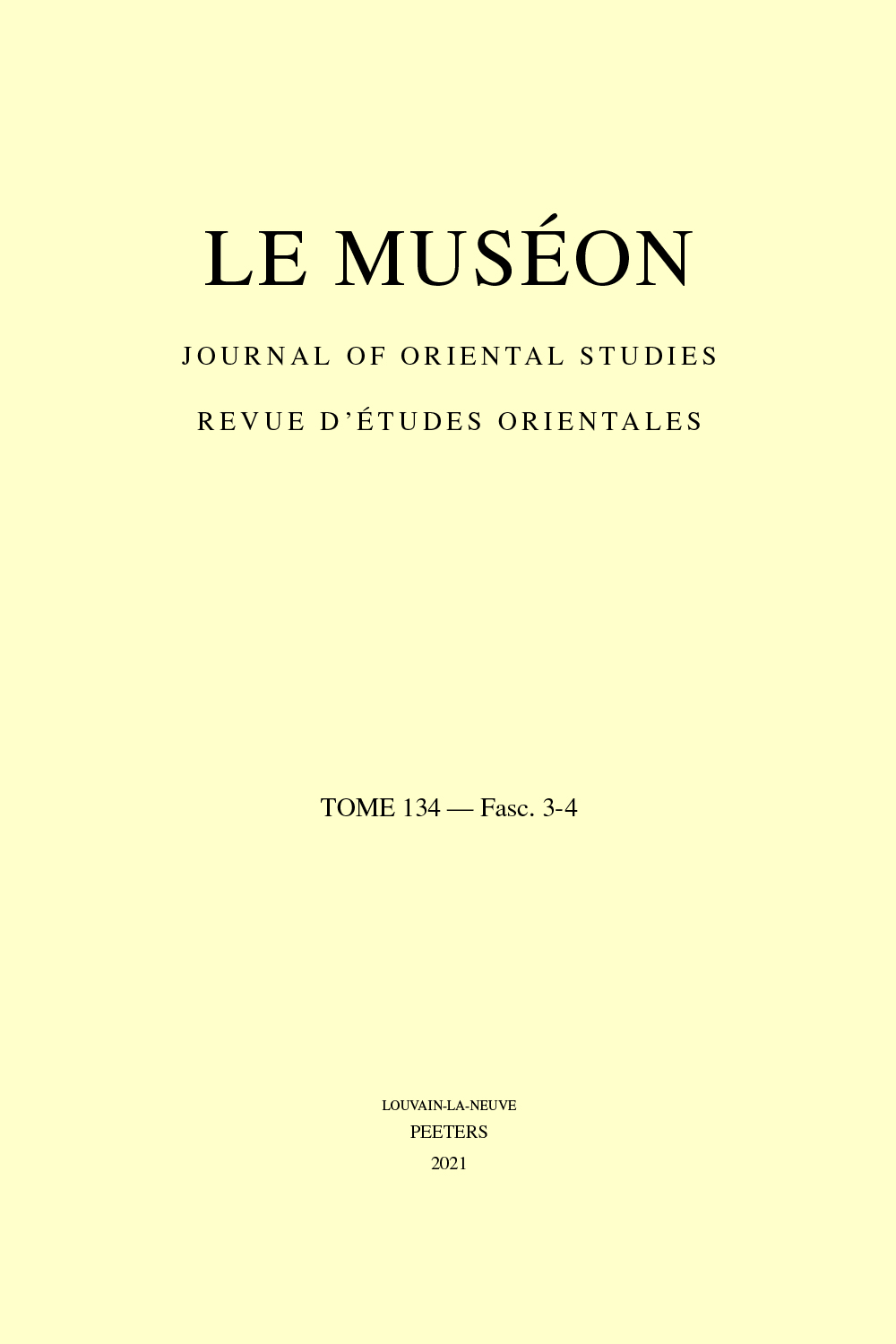 previous article in this issue previous article in this issue | next article in this issue  |

|
Document Details : Title: Griechisch-Orthodoxe (melkitische) Christen im zentralen und südlichen Syrien Author(s): TODT, K.-P. Journal: Le Muséon Volume: 119 Issue: 1-2 Date: 2006 Pages: 33-88 DOI: 10.2143/MUS.119.1.2011769 Abstract : In a Notitia episcopatuum of the Greek Orthodox patriarchate of Antioch, composed in the end of the 11th century, we find on the places 1, 6, 9 and 13 the metropolitan sees of Tyre with 13 bishoprics, of Bostra with 18 bishoprics, of Damascus with 10 bishoprics and of Emesa (Homs) with 13 bishoprics. How many of these metropolitan sees and bishoprics did really exist in the period between the 7th and the 14th centuries? A lot of sources show, that Greek Orthodox Christians lived always in Tyre, Tripolis, Baṭrun (ancient Botrys), Beirut, Sidon, Akkon, and Emesa (Homs), which had become a metropolis with 4 bishoprics in the 8th century. In sources of the Umayyad, ‘Abbasid and Faṭimid periods seven Greek Orthodox metropolitans of Damascus are mentioned. So we can be sure, that since the Arabic conquest of Damascus (635) a Greek Orthodox metropolitan was always officiating in the city. In 1217 Ṣaidnāya, the famous place of pilgrimage north of Damascus, is mentioned as a Greek Orthodox dioecese. A relatively well known dioecese is Qārā, probably ancient Chonochora. On f. 163v of the British Library Additamentum 14488 a list of ten Greek Orthodox bishops of Qārā is given, written in 1136. In September 1266 the soldiers of the Mamlūk sultan Baibars (1260-1277) killed the adult men of Qārā and the monks living in the nearby monastery of St James and enslaved the weamen and children. But Christianity in Qārā revived in the beginning of the 14th century. In sources of the 13th century Greek Orthodox Christians are mentioned as living in az-Zabadānī, Kaphar Napach (modern An-Nabk), and in the villages near Mount Hermon. An important Greek Orthodox bishopric in the ecclesiastical province of Phoenice Libanensis was Heliupolis/Baalbek, probably in the 8th or 9th centuries promoted an autocephalous metropolis. Only the dioceses of the ecclesiastical province of Arabia vanished during the 9th and 10th centuries. Even with the fragmentary evidence of the sources we can establish, that a numerous Greek Orthodox population with a functionning church organization existed in Southern Syria in the Early Islamic era and in the period of the Crusades. Therefore in 1365 patriarch Pachomios I and his synod transfered the permanent residence of the patriarch to Damascus. |
|
